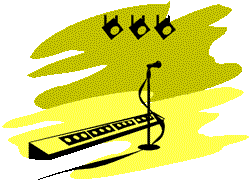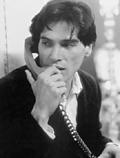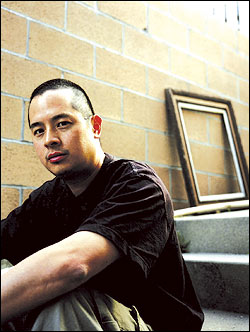- Armando, “Trance Dance” (Trax; originally released 1993). iTunes
- Hieroglyphic Being, “Je Suis Musique” (Spectral Sounds). iTunes
- L’Usine, “Breed” (Designed Disorder).
- Portable, “Typhoon” (~scape). iTunes
- Chris Abrahams, “Can of Faces” (Room40).
- DJ BC, “Stand Up Dance” (MP3).
- Paul Wall ft. Big Pokey, “Sittin’ Sideways” (Atlantic). iTunes
- Field Mob ft. Ludacris, “Georgia” (Disturbin’ tha Peace).
- Young Gunz, “Same Shit, Different Day” (Roc-a-Fella). iTunes
- Blue Scholars, “The Ave” (Blue Scholars).
- Spacehog, “In the Meantime” (Rhino; originally released 1996). iTunes
- Spooky Dance Band, “Chemical Reaction” (PDX Pop Now!; originally recorded c. 2003).
- Hockey Night, “Tubin'” (Lookout!). iTunes
- Duke Ellington, “Day Dream” (Shout! Factory; originally released 1956). iTunes
- William Parker Quartet, “Poem for June Jordan” (Aum Fidelity).
Looking over this, the ninth mix I’ve made for this column, what strikes me isn’t what’s on here but what’s missing—namely, star power. Obviously, there are exceptions—Blue Scholars locally, Ludacris for sure, Young Gunz and Paul Wall soon enough perhaps, Ellington eternally, of course. Some of you might even recognize Spacehog’s Royston Langston from the late-’90s/early-’00s gossip pages. But chances are you wouldn’t know most of these folks if you saw them on the sidewalk, which is probably fine with them. Fame can be plenty unseemly, and plenty of great music comes from genres where riches are rare—the electronic stuff that occupies the mix’s first third, the ruminative jazz that closes it. Then there’s the set’s mash-up: Not only have I never heard of DJ BC before, neither Philip Glass nor Dizzee Rascal, BC’s source material, is anything resembling a “star” in America.
So why mention it at all? Because there’s long been a sense among serious pop fans (critics included) that music should be incandescent by birthright. These are desperate times for anyone who subscribes to that belief even fleetingly. Is a shrill dolt like Conor Oberst really the best “star” indie rock can come up with? Is reading about yet another band of we-just-wanna-party doorknobs indulging in tedious “rock and roll lifestyle” clichés really preferable to knowing about good records made by relatively unexciting people?
Normally, I don’t think so. But maybe it is. Part of the privilege of manning this space every three weeks is that I get to keep track of what songs I care about as the year unfolds. The drawback is looking at earlier mixes and wondering what, precisely, I was thinking by including this or that song. I suspect something like that will happen with this one, too. But each time I’ve dipped into the earlier mixes to sate my curiosity about my own bad judgment, I’ve been both surprised and gratified: Oh yeah, that one. That’s really good, isn’t it? I’d almost forgotten. Not that I expect you to agree, of course. But usually, this kind of forgetfulness has had more to do with not having had a persona through which to help pinpoint the record’s appeal than anything. Hype can be near poisonous. It can make it difficult if not impossible to hear a record, good or bad, for what it is. But the opposite is true just as often.







